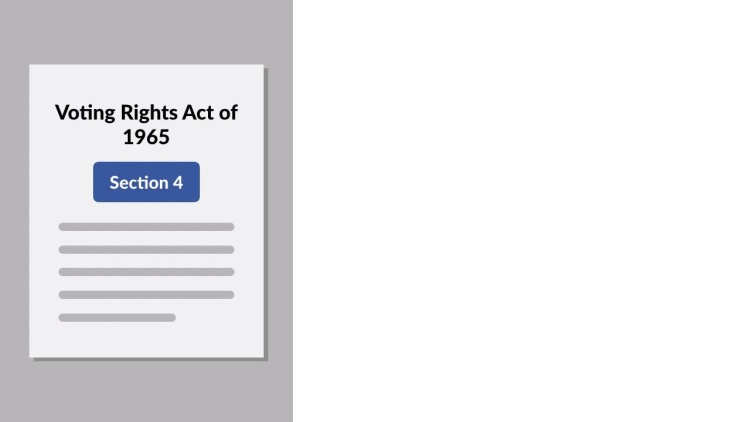South Carolina v. Katzenbach
United States Supreme Court
383 U.S. 301 (1966)

- Written by Richard Lavigne, JD
Facts
The Voting Rights Act of 1965 sought to eliminate racial discrimination in voting. In addition to regulations applicable to all states, the act contained certain more stringent regulations applicable to states in which voting discrimination was most prolific. The more stringent regulations applied to states that both (1) used a test as a prerequisite to voter registration and (2) had fewer than 50 percent of eligible voters registered to vote as of November 1, 1964 (the coverage provision). In impacted states, no person could be denied the right to vote for failing to comply with a test for five years from the last occurrence of substantial voting discrimination, essentially requiring a suspension of voter-qualification tests (the suspension-of-tests provision). Also, the states could not adopt new voting laws without first submitting them to the attorney general or a federal court for approval (the preclearance provision). Finally, the attorney general could appoint federal examiners to identify and register qualified voters who would thereafter be entitled to vote in all elections (the examiner provision). South Carolina (plaintiff), a state subject to the more stringent regulations, filed a complaint against Attorney General Nicholas Katzenbach (defendant) seeking a declaratory judgment that the provisions exceeded the scope of congressional legislative authority. The United States Supreme Court assumed original jurisdiction because the case presented a controversy between a state and a citizen of another state.
Rule of Law
Issue
Holding and Reasoning (Warren, C.J.)
Concurrence/Dissent (Black, J.)
What to do next…
Here's why 899,000 law students have relied on our case briefs:
- Written by law professors and practitioners, not other law students. 47,000 briefs, keyed to 994 casebooks. Top-notch customer support.
- The right amount of information, includes the facts, issues, rule of law, holding and reasoning, and any concurrences and dissents.
- Access in your classes, works on your mobile and tablet. Massive library of related video lessons and high quality multiple-choice questions.
- Easy to use, uniform format for every case brief. Written in plain English, not in legalese. Our briefs summarize and simplify; they don’t just repeat the court’s language.






